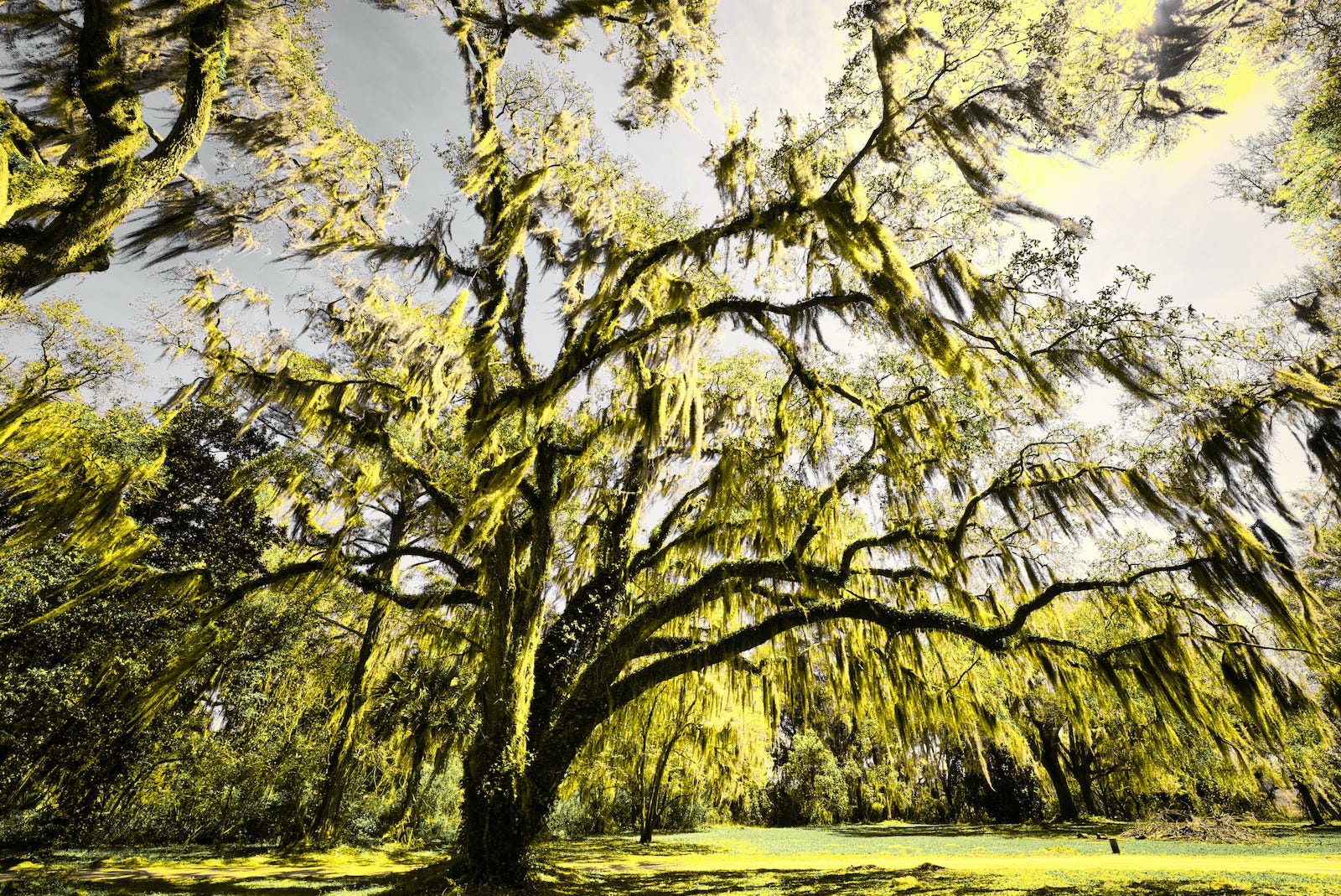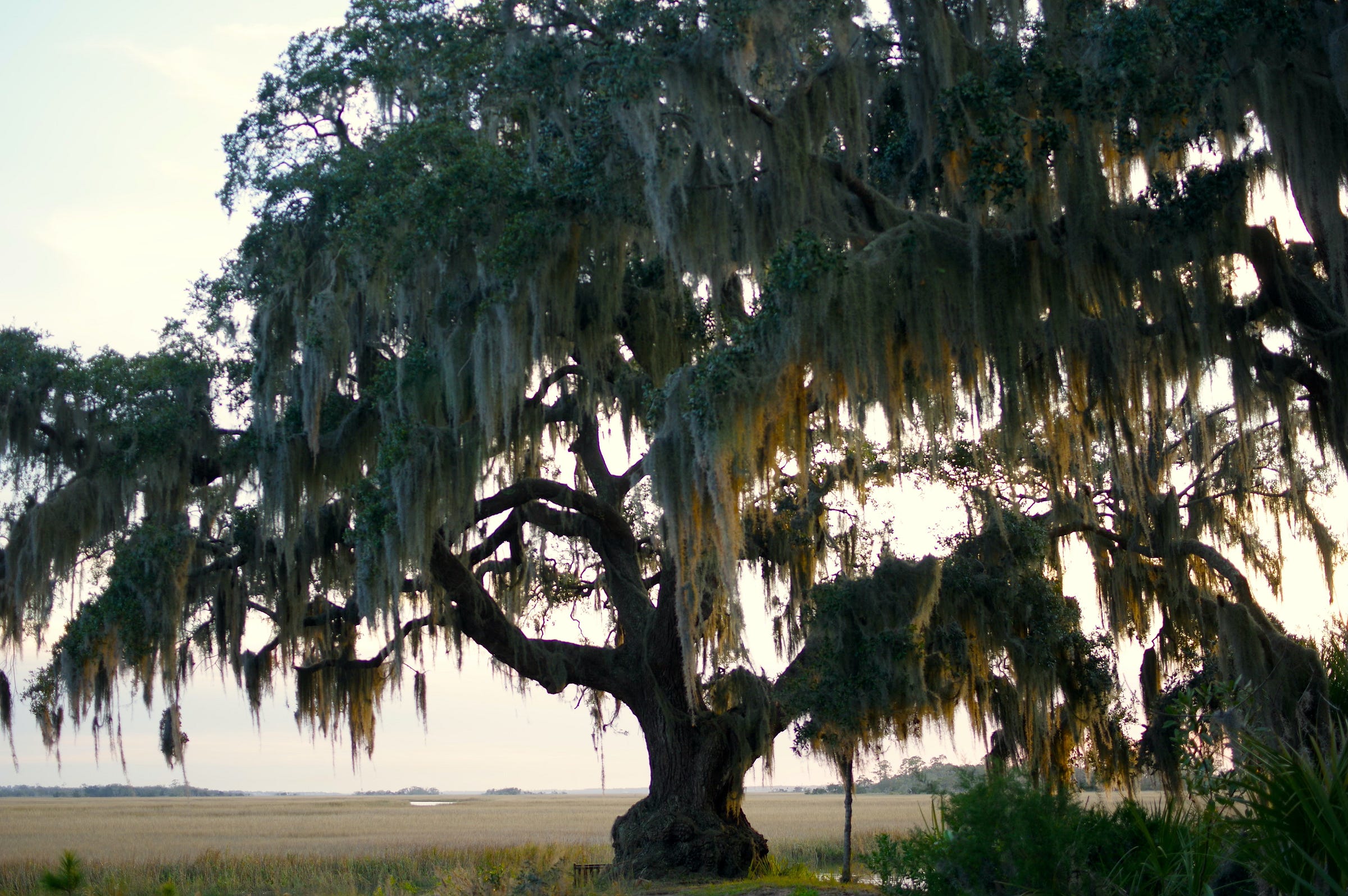
You may be new to Trackless Wild. Perhaps you signed up for the Journey in Place course and didn’t realize at the time that this is a weekly newsletter for folks who live a nature-forward life. That’s us. We’re folks who put nature high on our list of concerns.
Trackless Wild comes out weekly. It usually contains an essay about something I’ve been thinking about, and I’ll often weld on some extras—a phenology almanac (natural history), a farm report, a call to action, a recipe, a book recommendation, a photo or two, and always good wishes for you.
This week’s issue is a photo essay on Spanish moss, with no bells and whistles. It’s only Spanish moss.
As ever, my best wishes for you, that you find yourself joyful and satisfied despite any bad news in your and our world.
Although Spanish moss has been called “tree hair,” it is not a parasite.
It’s not a moss, either, despite its name. And it’s not a fungus. It’s a flowering plant.
I’ve never taken a photo of its inconspicuous whitish blooms, although I’ve seen them. The plants bloom April through July. The tiny flowers exude a lovely fragrance. Here’s a photo from the National Gardening Association website. The stems of the plant contain tiny scales, which hold moisture, and you can see those as well in that flower photo.
Spanish moss belongs to the bromeliad family, Bromeliaceae, as does pineapple.

Spanish moss prefers live oak and bald cypress, because they leach minerals abundantly through their leaves, although it will grow on other trees and sometimes even on fence wires.
Spanish moss propagates via wispy seeds and also via festoons, which are pieces of the plant. My grandmother loved the plant hanging from trees in her yard in Appling County, Georgia. She would gather Spanish moss from other places and “replant” it in her own yard.

However, believe it or not, Spanish moss frightens some people and they actually buy chemicals to kill it without losing their trees—although I can’t imagine someone hating Spanish moss yet loving a tree.
Researchers are finding that medicinally the plant reduces blood glucose in lab animals. It’s being tested for treatment of diabetes.
Henry Ford used it to stuff the first seats of his vehicles.
It’s one of the most enchanting, magical plants I know. If you’ve never seen it, come visit. I’ll meet you under the draping, swinging, dancing, trance-inducing strands and festoon you with its flowers.
There Is Room for You at Serenbe
Starting Sunday, Feb. 18 I teach a 5-day writing workshop at Serenbe, a biophilic community near Atlanta. The workshop is full, but I spoke to Janice the organizer and she can squeeze in another person if you act today. I decided to let you know in case you’ve been thinking how nice this would be but haven’t moved on it. I’d love to work with you.
Also, for Atlanta area folks, on Monday 19th at 4 pm I’ll be doing a book signing event at Hills and Hamlets Bookstore. Here’s more info. It’s free.












There is a woman named Janisse Ray
Who is a writer with much to say
She loves animals and trees,
Her husband, son, and also bees.
To her I wish a Happy Valentine’s Day.
You always teach and inspire me.
I'm so confused as to why, as you say, someone would love a tree but want to kill the moss. It's so beautiful! Like a water maiden.